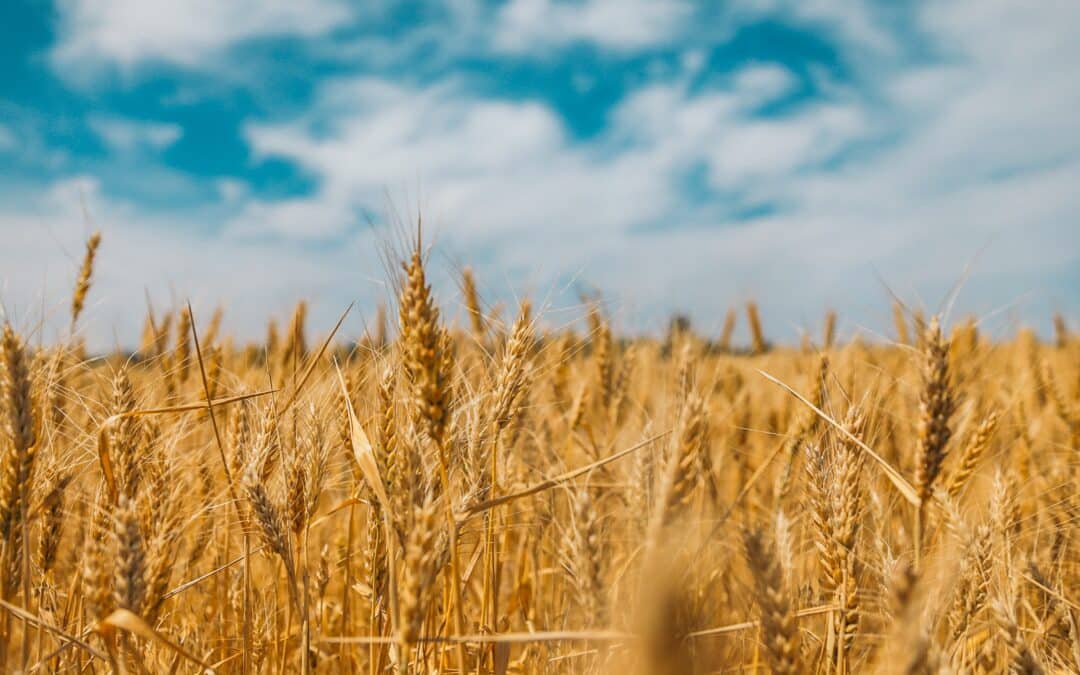It’s often called the staff of life. Communist dictator Joseph Stalin stole wheat to starve the Ukraine people. Photo courtesy Unsplash/Polina Rytova.
The famine in Ukraine in 1932-33, is known as the Holodomor. This famine took place under Communist dictator Joseph Stalin. He is often called “uncle Joe” from WWII days.
Holodomor is Ukranian [Голодомор] for “murder by hunger” or “death induced by hunger”. The Holodomor was a man-made famine that happened in Ukraine between 1932 and 1933. Ukraine was a part of the Soviet Union at that time.
Holodomor Memorial in Windsor, Ontario, Canada. Photo courtesy Maiden/Holodomor.
Stalin ordered confiscation of all food and grains from the countryside farms. This left millions starving and searching for food to eat. Emaciated villagers dug holes with their bare hands in empty gardens. Many of their bodies were starved and began to swell.
A US Congressional delegation produced a documentary in 1988. It reported, “You could see them walking about, just walking and walking, and one would drop, and then another, and so on it went.”
There are no exact figures on how many died, some historians put the number between 2.5 and 3.5 million. Many others agree that there were likely somewhere around 7 million people murdered. Former Ukraine President Viktor Andriyovych Yushchenko (2005-2010) and others have put the toll as high as at least 10 million were killed.
Scholars and politicians say the Holodomor was a genocide, and some say the huge loss of life was comparable to the Holocaust. They argue that the Soviet policies were an attack on the rise of Ukrainian nationalism and therefore is a genocide.
Unlike other famines caused by disease or drought throughout history, the Holodomor was brought about by a blood thirsty dictator bent on total control. Stalin wanted to replace Ukraine’s small farms with state-run collectives and punish independent-minded Ukrainians who posed a threat to his totalitarian rule.
“The Ukrainian famine was a clear case of a man-made famine,” said Alex de Waal, director of the World Peace Foundation at Tufts University and author of the 2018 book Mass Hunger: History and Future Before the Famine. de Waal explained that this was “a famine caused by calamitous social-economic policies and one aimed at a particular population for repression or punishment.” In other words a policy of starvation, persecution and punishment of people who would not submit to his total power.
At that time, Ukraine, a country about the size of Texas on the Black Sea coast in western Russia, was part of the Soviet Union and was then ruled by Stalin. In 1929, as part of his plan to quickly create a fully communist economy, Stalin used collectivization, replacing individual property and agriculture with large state-run collectives. Ukraine’s small farmers, mostly peasants, refused to give up their land and way of life.
Stalin called the peasants “kulaks” or “well-to-do” peasants. The reality was these peasants became “enemies of the state” and were driven off their land by force.
The collectivization measures fell short of Stalin’s planners target by 60%. Stalin then ordered what food they did produce confiscated as punishment for their ‘idleness’ and not meeting projections.
Professor of Russian history at Miami University in Ohio, Stephen Norris, explained the situation saying, “The famine of 1932-33 stemmed from later decisions made by the Stalinist government, after it became clear that the 1929 plan had not gone as well as hoped for, causing a food crisis and hunger.”
Norris said party leaders were told to extract more grain from regions that had not met their quotas in a document called, “On the Procurement of Grain in Ukraine, the North Caucasus, and the Western Oblast.” The document stipulated the arrest of collective farm chiefs who resisted and of party members who did not fulfill the new quotas.
The Soviet dictator used these grain shortfalls as an excuse to increase the terror on Ukrainians and to remove their culture and language. This also led to the arrest of tens of thousands of Ukraine teachers and scholars, along with the torture and murder of peasants and others.
The ore peasants fled the strong rule of Stalin the more the secret police showed up creating a series of internal passports. The clampdown led to desperate times for citizens where the Congressional study reported that peasants ate anything and everything to stay alive.
Stalin’s response was only to clamp down even further by imprisonment in prisons and labor camps. This worsened the production with no laborers to work the fields and no quotas met.
The Russian government initially denied the event took place but eventually acknowledged it. They still deny genocide ever took place. Article 2 of the U.N. Convention on the Prevention and Punishment of the Crime of Genocide (1948) defines genocide as “any of the following acts committed with intent to destroy, in whole or in part, a national, ethnical, racial or religious group.”
In April 2008, Russia’s lower house of Parliament passed a resolution stating that “There is no historical proof that the famine was organized along ethnic lines.”
To date, 34 countries have recognized the Holodomor genocide on the Ukrainian people. In 2018, the US Senate passed a resolution agreeing with the 1988 Congressional report that Stalin had committed genocide.
Stalin and his policies of compliance through forced starvation ultimately galvanized the Ukrainian people against the Soviet dictator. To date there is a great hatred and resentment of Russia by the Ukrainian people and a great move of nationalism.
As of this writing there are 34 countries who officially recognize the Holodomor as genocide. They include: Andorra, Argentina, Australia, Belgium, Brazil, Bulgaria, Canada, Colombia, Czech Republic, Ecuador,
Estonia, France, Georgia, Germany, Hungary, Iceland, Ireland, Italy, Latvia, Lithuania, Mexico, Moldova, Paraguay, Peru, Poland, Portugal, Romania, Slovakia, Spain, Ukraine, United Kingdom, United States, and Vatican City.






 RSS - Posts
RSS - Posts